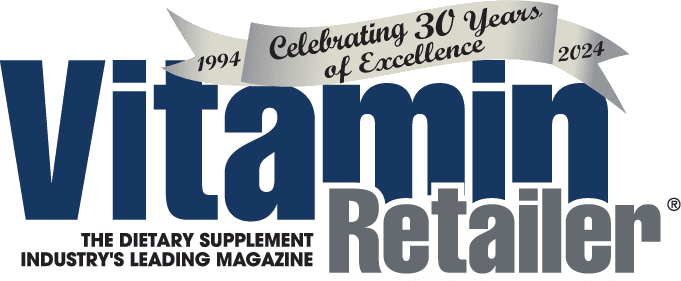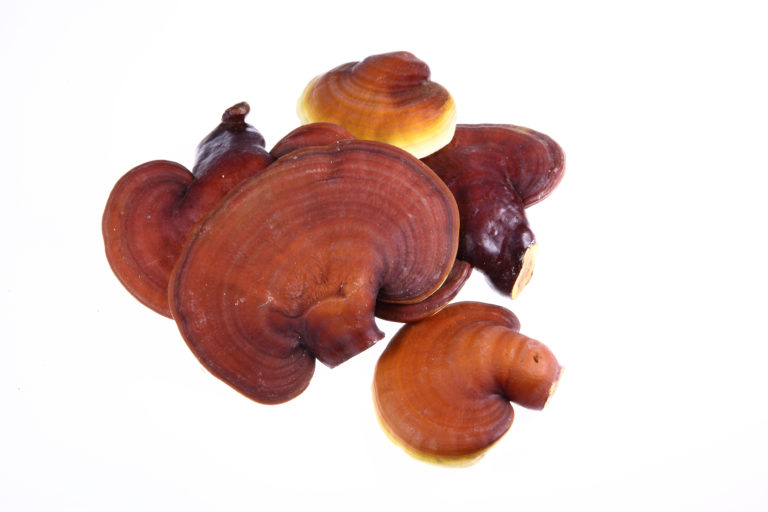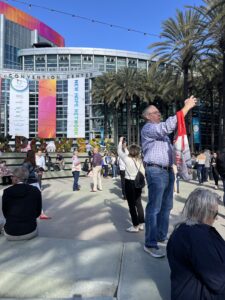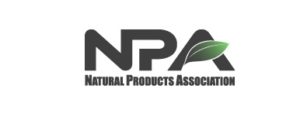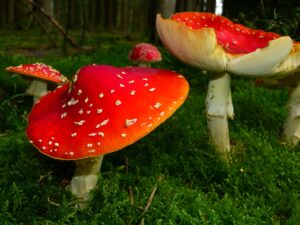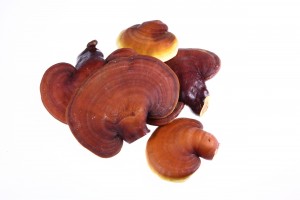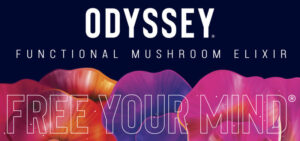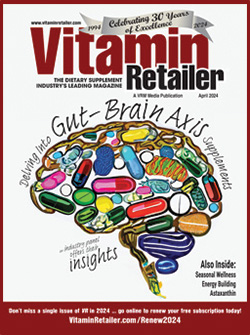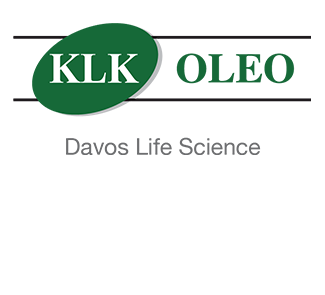For over 2,000 years, mushrooms have been used as medicines. In fact, in September of 1991, a 5,300-year-old mummy in the Tyrolean Alps, was found along with his medicine kit that contained Piptoporus betulinus, a mushroom he probably used as a natural wormkiller and laxative.1 Edible mushroom extracts, especially those used in Chinese and Japanese natural medicines (Cordyceps sinensis, Agaricus blazei, Grifola frondosa, Trametes versicolor and Ganoderma lucidum), are a rich source of naturally occurring polysaccharides; especially beta glucans. These polysaccharides can directly stimulate immune reactions.
The following is a discussion about the various health properties of Cordyceps sinensis and Agaricus blazei, as well as their safety profile:
Cordyceps sinensis
Cordyceps beneficial effects on the immune system seem to be a function of its ability to increase the number of T helper cells2, increase natural killer cell activity3-4, stimulate blood mononuclear cells5, increase levels of interferon-gamma, tumor necrosis factor- alpha, and interleukin-16, and prolong the survival of lymphocytes.7
History
Cordyceps is a mushroom found on the high plateaus of western China. Cordyceps’ Mandarin name, dong chong zia cao, literally means “winter bug, summer herb. This accurately describes the fact that the worm dies in the summer, and a mushroom grows on it. It was discovered 1,500 years ago when Tibetan herdsman found that their yaks were much livelier after eating this worm-mushroom from mountain pastures.8 Eventually, Cordyceps found its way into the hands of the Emperor’s physicians who considered it to have ginsenglike properties.9
In-vitro and Animal Research
There are some clinical trials supporting the efficacy of Cordyceps, particularly for liver, kidney, and immune problems. A number of studies indicate that Cordyceps may have anticancer, anti-metastatic, immuneenhancing, and antioxidant effects.10-14
Human Research
Supplementation with Cordyceps on 36 patients with advanced cancer showed that it could restore cellular immunological function and improve quality of life, suggesting it could be used as adjuvant therapy in advanced cancer.15 In addition, supplementation with Cordyceps on 33 patients with chronic hepatitis B was able to improve liver function and adjust body immunocompetence.16 Other research17 found that Cordyceps could improve liver function, reduce liver inflammation, and fight against liver fibrosis in patients with chronic hepatitis B liver fibrosis.
In 1993, Chinese women runners broke records in marathons on three separate occasions.18 Aside from training and dedication, credit for these impressive athletic feats was given to the fact that the trained on a diet that included Cordyceps.19 Nevertheless, three clinical trials20-22 using Cordyceps in other athletes were unable to reproduce any of the endurance benefits seen by the Chinese women runners.
Safety
No contraindications or serious adverse effects have been reported for Cordyceps.23 Possible drug interactions: concomitant administration with cyclosporine can reduce nephrotoxicity in kidney-transplant recipients; concomitant administration with aminoglycosides can reduce amikacin-induced nephrotoxicity in older people.24 The American Herbal Product Association’s Botanical Safety Handbook does not suggest any restrictions on the use of Cordyceps during pregnancy.25
Agaricus blazei
Research shows that agaricus mushroom seems to have immunostimulant effects.26 In-vitro and animal research suggest that it enhances the production of cytokines such as interferon and interleukin.27-28 Additionally, fractions of Agaricus stimulate monocyte production of interleukin-12.29
Background
First discovered in the U.S. in Florida in 1944, Agaricus blazei, its main natural habitat is the mountainous district of Piedade in Sao Paulo, Brazil. It was suggested that the extremely low rate of adult disease occurrence in the Piedade region is a result of the people using A. blazei as a part of their regular diet. The mushroom was brought to Japan in 1965. An artificial cultivation process was established in 1978, and since then this mushroom has been well evaluated in terms of biochemical and medicinal properties.30
In-vitro and Animal Research
Extracts of Agaricus mushroom, especially beta-glucan extracts, have had anti-tumor and immunostimulant effects in animal research.31-35 Other constituents of Agaricus have been shown to have antiangiogenic effects on tumors.36-37
Human Research
Use of Agaricus by 72 type-2 diabetic subjects in a randomized, doubleblind, placebo-controlled trial found that it decreased insulin resistance more than metformin and diamicron (Canadian drug not available in the U. S.) alone, resulting in lower fasting insulin levels.38 Other research showed that an Agaricus mushroom extract improved some of the adverse effects of chemotherapy including generalized weakness, decreased appetite, and emotional instability.39 In addition, a clinical study40 found that Agaricus extract was able to normalize liver function in patients with chronic hepatitis B.
Safety
A comprehensive literature search of Medline, Embase and Biosys did not indicate that any serious adverse effects have been reported for Agaricus. Likewise, there were no well-known drug interactions reported with Agaricus (searches were conducted for both synonyms, ie. A. blazeii and A. brasiliensis). In addition, no contraindications have been reported. Despite the lack of any reports of adverse effects associated with the use of Agaricus species during pregnancy, since there are no data that affirmatively support such use, pregnant women are cautioned to consult a qualified healthcare practitioner before ingesting Agaricus.
References:
1 Halpern GM, Miller AH. Medicinal Mushrooms. New York: M. Evans & Company; 2002:59-74.
2 Chen GZ, Chen GL, Sun T, et al. Effects of Cordyceps sinensis on murine T lymphocyte subsets. Chin Med J (English) 1991;104:4-8.
3 Liu C, Lu S, Ji MR. [Effects of Cordyceps sinensis (CS) on in vitro natural killer cells]. Chung Kuo Chung Hsi I Chieh Ho Tsa Chih 1992;12:267-9, 259.
4 Xu RH, Peng XE, Chen GZ, Chen GL. Effects of cordyceps sinensis on natural killer activity and colony formation of B16 melanoma. Chin Med J (English) 1992;105:97-101.
5 Chen YJ, Shiao MS, Lee SS, Wang SY. Effect of Cordyceps sinensis on the proliferation and differentiation of human leukemic U937 cells. Life Sci 1997;60:2349-59.
6 Chen YJ, Shiao MS, Lee SS, Wang SY. Effect of Cordyceps sinensis on the proliferation and differentiation of human leukemic U937 cells. Life Sci 1997;60:2349-59.
7 Zhu XY, Yu HY. [Immunosuppressive effect of cultured Cordyceps sinensis on cellular immune response]. Chung Hsi I Chieh Ho Tsa Chih 1990;10:485-7, 454.
8 Halpern GM. Cordyceps: China’s Healing Mushroom. Garden City Park, New York: Avery Publishing; 1999:7-14.
9 Hobbs C. Medicinal Mushrooms: An exploration of tradition, healing and culture. Santa Cruz, CA: Botanica Press; 1995.
10 Nakamura K, Yamaguchi Y, Kagota S, et al. Activation of in vivo Kupffer cell function by oral administration of Cordyceps sinensis in rats. Jpn J Pharmacol 1999; 79:505-8.
11 Nakamura K, Yamaguchi Y, Kagota S, et al. Inhibitory effect of Cordyceps sinensis on spontaneous liver metastasis of Lewis lung carcinoma and B16 melanoma cells in syngenic mice. Jpn J Pharmacol 1999; 79:335-41.
12 Lui JL, Lui RY. Enhancement of cordyceps tail polysaccharide on cellular immunological function in vitro. Chin Pharm J China 2001; 36:738-41 [in Chinese].
13 Shin KH, Lim SS, Lee SH, et al. Antioxidant and immunostimulating activities of the fruiting bodies of aecilomyces japonica, a new type of Cordyceps sp. Ann NY Acad Sci 2001; 928:261-73.
14 Yamaguchi Y, Kagota S, Nakamura K, et al. Antioxidant activity of the extracts from fruiting bodies of cultured Cordyceps sinensis. Phytother Res 2000; 14:647-9.
15 Zhou DH, Lin LZ. [Effect of Jinshuibao capsule on the immunological function of 36 patients with advanced cancer]. Chung Kuo Chung Hsi I Chieh Ho Tsa Chih 1995;15:476-8.
16 Zhou L, Yang W, Xu Y, et al. [Short-term curative effect of cultured Cordyceps sinensis (Berk.) Sacc. Mycelia in chronic hepatitis B]. Chung Kuo Chung Yao Tsa Chih 1990;15:53-5, 65.
17 Wang XB, Jiang YY, Zhao CY. [Clinical research of xinganbao capsule on the treatment of chronic hepatitis B liver fibrosis]. [Article in Chinese] Zhongguo Zhong Xi Yi Jie He Za Zhi. 2012 Mar;32(3):325-8.
18 Halpern GM, Miller AH. Medicinal Mushrooms. New York: M. Evans & Company; 2002:59-74.
19 Halpern GM. Cordyceps: China’s Healing Mushroom. Garden City Park, New York: Avery Publishing; 1999:91-98.
20 Colson SN, Wyatt FB, Johnston DL, Autrey LD, FitzGerald YL, Earnest CP. Cordyceps sinensis- and Rhodiola rosea-based supplementation in male cyclists and its effect on muscle tissue oxygen saturation. J Strength Cond Res. 2005 May;19(2):358-63.
21 Parcell AC, Smith JM, Schulthies SS, Myrer JW, Fellingham G. Cordyceps Sinensis (CordyMax Cs-4) supplementation does not improve endurance exercise performance. Int J Sport Nutr Exerc Metab. 2004 Apr;14(2):236-42.
22 Earnest CP, Morss GM, Wyatt F, Jordan AN, Colson S, Church TS, Fitzgerald Y, Autrey L, Jurca R, Lucia A. Effects of a commercial herbal-based formula on exercise performance in cyclists. Med Sci Sports Exerc. 2004 Mar;36(3):504-9.
23 Natural Medicines Comprehensive Database [database online]. Stockton, CA: Therapeutic Research Faculty; 2004. Available at: www.naturaldatabase.com. Accessed March 25, 2004.
24 McGuffin M, Hobbs C, Upton R, Goldberg A, eds. American Herbal Products Association’s Botanical Safety Handbook. Boca Raton, FL: CRC Press; 1997.
25 McGuffin M, Hobbs C, Upton R, Goldberg A, eds. American Herbal Products Association’s Botanical Safety Handbook. Boca Raton, FL: CRC Press; 1997.
26 Shimizu S, Kitada H, Yokota H, et al. Activation of the alternative complement pathway by Agaricus blazei Murill. Phytomedicine 2002;9:536-45
27 Chen L, Shao H. Extract from Agaricus blazei Murill can enhance immune responses elicited by DNA vaccine against foot-and-mouth disease. Vet Immunol Immunopathol 2006;109:177-82.
28 Kasai H, He LM, Kawamura M, et al. IL-12 Production induced by Agaricus blazei fraction H (ABH) involves toll-like receptor (TLR). Evid Based Complement Alternat Med 2004;1:259-67.
29 Kasai H, He LM, Kawamura M, et al. IL-12 Production induced by Agaricus blazei fraction H (ABH) involves toll-like receptor (TLR). Evid Based Complement Alternat Med 2004;1:259-67.
30 Mizuno T. Medicinal properties and clinical effects of culinary-medicinal mushroom Agaricus blazei Murrill (Agaricomycetideae). International Journal of Medicinal Mushrooms 2002; 4(4):299-312.
31 Kaneno R, Fontanari LM, Santos SA, et al. Effects of extracts from Brazilian sun-mushroom (Agaricus blazei) on the NK activity and lymphoproliferative responsiveness of Ehrlich tumor-bearing mice. Food Chem Toxicol 2004;42:909-16.
32 Nakajima A, Ishida T, Koga M, et al. Effect of hot water extract from Agaricus blazei Murill on antibody-producing cells in mice. Int Immunopharmacol 2002;2:1205-11.
33 Kobayashi H, Yoshida R, Kanada Y, et al. Suppressing effects of daily oral supplementation of beta-glucan extracted from Agaricus blazei Murill on spontaneous and peritoneal disseminated metastasis in mouse model. J Cancer Res Clin Oncol 2005;131:527-38.
34 Ohno N, Furukawa M, Miura NN, et al. Antitumor beta glucan from the cultured fruit body of Agaricus blazei. Biol Pharm Bull 2001;24:820-8.
35 Lee YL, Kim HJ, Lee MS, et al. Oral administration of Agaricus blazei (H1 strain) inhibited tumor growth in a sarcoma 180 inoculation model. Exp Anim 2003;52:371-5.
36 Takaku T, Kimura Y, Okuda H. Isolation of an antitumor compound from Agaricus blazei Murill and its mechanism of action. J Nutr 2001;131:1409-13.
37 Kimura Y, Kido T, Takaku T, et al. Isolation of an anti-angiogenic substance from Agaricus blazei Murill: its antitumor and antimetastatic actions. Cancer Sci 2004;95:758-64.
38 Hsu CH, Liao YL, Lin SC, et al. The mushroom Agaricus Blazei Murill in combination with metformin and gliclazide improves insulin resistance in type 2 diabetes: a randomized, double-blinded, and placebo-controlled clinical trial. J Altern Complement Med 2007;13:97-102.
39 Ahn WS, Kim DJ, Chae GT, et al. Natural killer cell activity and quality of life were improved by consumption of a mushroom extract, Agaricus blazei Murill Kyowa, in gynecological cancer patients undergoing chemotherapy. Int J Gynecol Cancer 2004;14:589-94.
40 Hsu CH, Hwang KC, Chiang YH, Chou P. The mushroom Agaricus blazei Murill extract normalizes liver function in patients with chronic hepatitis B. J Altern Complement Med. 2008 Apr;14(3):299-301.
41 Halpern GM, Miller AH. Medicinal Mushrooms. New York: M. Evans & Company; 2002:59-74.
42 Hobbs C. Medicinal Mushrooms: An exploration of tradition, healing and culture. Santa Cruz, CA: Botanica Press; 1995.
43 Nanba H, Hamaguchi AM, Kuroda H. The chemical structure of an antitumor polysaccharide in fruit bodies of Grifola frondosa (maitake). Chem Pharm Bull 1987; 35:1162-8.
44 Yamada Y, Nanba H, Kuroda H. Antitumor effect of orally administered extracts from fruit body of Grifola frondosa (maitake). Chemotherapy 1990; 38:790-6.
45 Nanba H. Immunostimulant activity in vivo and anti-HIV activity in vitro of 3 branched b-1–6-glucans extracted from maitake mushrooms (Grifola frondosa). VIII International Conference on AIDS, Amsterdam, 1992 [abstract].
46 Kubo K, Nanba H. Anti-hyperliposis effect of maitake fruit body (Grifola frondosa). I. Biol Pharm Bull 1997; 20:781-5.
47 Adachi K, Nanba H, Otsuka M, Kuroda H. Blood pressure lowering activity present in the fruit body of Grifola frondosa (maitake). Chem Pharm Bull 1988; 36:1000-6.
48 Nakai R, et al. Effects of maitake (Grifola frondosa) water extact on inhibition of adipocyte conversion of C3H10T1/2B2C1 cells. J Nutr Sci Vitaminol 1999; 45:385-390.
49 Konno S, Tortorelis DG, Fullerton SA, et al. A possible hypoglycaemic effect of maitake mushroom on Type 2 diabetic patients. Diabet Med 2001;18:1010.
50 Chen JT, Tominaga K, Sato Y, et al. Maitake mushroom (Grifola frondosa) extract induces ovulation in patients with polycystic ovary syndrome: a possible monotherapy and a combination therapy after failure with first-line clomiphene citrate. J Altern Complement Med 2010;16:1295-9.
51 Yokota M. Observatory trial of anti-obesity activity of maitake (Grifola frondosa). Anshin 1992; 7:202-4.
52 McGuffin M, Hobbs C, Upton R, Goldberg A, eds. American Herbal Products Association’s Botanical Safety Handbook. Boca Raton, FL: CRC Press; 1997.
53 McGuffin M, Hobbs C, Upton R, Goldberg A, eds. American Herbal Products Association’s Botanical Safety Handbook. Boca Raton, FL: CRC Press; 1997.
54 McGuffin M, Hobbs C, Upton R, Goldberg A, eds. American Herbal Products Association’s Botanical Safety Handbook. Boca Raton, FL: CRC Press; 1997.
55 Qian ZM, Xu MF, Tang PL. Polysaccharide peptide (PSP) restores immunosuppression induced by cyclophosphamide in rats. Am J Chin Med 1997;25:27-35.
56 Kidd P.M. The use of mushroom glucans and proteoglycans in cancer treatment. Alternative Medicine Review. 2000;5:4–27.
57 Standish LJ, Wenner CA, Sweet ES, et al. Trametes versicolor Mushroom Immune Therapy in Breast Cancer. J Soc Integr Oncol. 2008 Summer;6(3):122–128.
58 Kidd P.M. The use of mushroom glucans and proteoglycans in cancer treatment. Alternative Medicine Review. 2000;5:4–27.
59 Lee K-H, Morris-Natschke SL, Yang X, et al. Recent progress of research on medicinal mushrooms, foods, and other herbal products used in traditional Chinese medicine. J Tradit Complement Med. 2012 Apr-Jun; 2(2): 84–95.
60 Maehara Y, Inutsuka S, Takeuchi H, et al. Postoperative PSK and OK-432 immunochemotherapy for patients with gastric cancer. Cancer Chemother Pharmacol 1993;33:171-5.
61 Iino Y, Yokoe T, Maemura M, et al. Immunochemotherapies versus chemotherapy as adjuvant treatment after curative resection of operable breast cancer. Anticancer Res 1995;15:2907-11.
62 Ogoshi K, Satou H, Isono K, et al. Immunotherapy for esophageal cancer. A randomized trial in combination with radiotherapy and radiochemotherapy. Cooperative Study Group for Esophageal Cancer in Japan. Am J Clin Oncol 1995;18:216-22.
63 Yokoe T, Iino Y, Takei H, et al. HLA antigen as predictive index for the outcome of breast cancer patients with adjuvant immunochemotherapy with PSK. Anticancer Res 1997;17:2815-8.
64 Nakazato H, Koike A, Saji S, et al. Efficacy of immunochemotherapy as adjuvant treatment after curative resection of gastric cancer. Study Group of Immunochemotherapy with PSK for Gastric Cancer. Lancet 1994;343:1122-6.
65 Sugimachi K, Maehara Y, Ogawa M, et al. Dose intensity of uracil and tegafur in postoperative chemotherapy for patients with poorly differentiated gastric cancer. Cancer Chemother Pharmacol 1997;40:233-8.
66 Hayakawa K, Mitsuhashi N, Saito Y, et al. Effect of Krestin as adjuvant treatment following radical radiotherapy in non-small cell lung cancer patients. Cancer Detect Prev 1997;21:71-7.
67 Morimoto T, Ogawa M, Orita K, et al. Postoperative adjuvant randomised trial comparing chemoendocrine therapy, chemotherapy and immunotherapy for patients with stage II breast cancer: 5-year results from the Nishinihon Cooperative Study Group of Adjuvant Chemoendocrine Therapy for Breast Cancer (ACETBC) of Japan. Eur J Cancer 1996;32A:235-42.
68 Suto T, Fukuda S, Moriya N, et al. Clinical study of biological response modifiers as maintenance therapy for hepatocellular carcinoma. Cancer Chemother Pharmacol 1994;33 Suppl:S145-8.
69 Toi M, Hattori T, Akagi M, et al. Randomized adjuvant trial to evaluate the addition of tamoxifen and PSK to chemotherapy in patients with primary breast cancer. 5-Year results from the Nishi-Nippon Group of the Adjuvant Chemoendocrine Therapy for Breast Cancer Organization. Cancer 1992;70:2475-83.
70 Mitomi T, Tsuchiya S, Iijima N, et al. Randomized, controlled study on adjuvant immunochemotherapy with PSK in curatively resected colorectal cancer. The Cooperative Study Group of Surgical Adjuvant Immunochemotherapy for Cancer of Colon and Rectum (Kanagawa). Dis Colon Rectum 1992;35:123-30.
71 Nio Y, Tsubono M, Tseng CC, et al. Immunomodulation by orally administered protein-bound polysaccharide PSK in patients with gastrointestinal cancer. Biotherapy 1992;4:117-28.
72 Kondo T, Sakamoto J, Nakazato H. Alternating immunochemotherapy of advanced gastric carcinoma: a randomized comparison of carbazilquinone and PSK to carbazilquinone in patients with curative gastric resection. Biotherapy 1991;3:287-95.
73 Torisu M, Hayashi Y, Ishimitsu T, et al. Significant prolongation of disease-free period gained by oral polysaccharide K (PSK) administration after curative surgical operation of colorectal cancer. Cancer Immunol Immunother 1990;31:261-8.
74 Go P, Chung CH. Adjuvant PSK immunotherapy in patients with carcinoma of the nasopharynx. J Int Med Res 1989;17:141-9.
75 Halpern GM, Miller AH. Medicinal Mushrooms. New York: M. Evans & Company; 2002.
76 McGuffin M, Hobbs C, Upton R, Goldberg A, eds. American Herbal Products Association’s Botanical Safety Handbook. Boca Raton, FL: CRC Press; 1997.
77 McGuffin M, Hobbs C, Upton R, Goldberg A, eds. American Herbal Products Association’s Botanical Safety Handbook. Boca Raton, FL: CRC Press; 1997.
78 McGuffin M, Hobbs C, Upton R, Goldberg A, eds. American Herbal Products Association’s Botanical Safety Handbook. Boca Raton, FL: CRC Press; 1997.
79 Wasser SP, Weis AL. Therapeutic effects of substances occurring in higher Basidiomycetes mushrooms: a modern perspective. Crit Rev Immunol 1999;19:65-96.
80 Yuen JW, Gohel MD. Anticancer effects of Ganoderma lucidum: a review of scientific evidence. Nutr Cancer 2005;53:11-7.
81 Gao Y, Zhou S, Jiang W, et al. Effects of ganopoly (a Ganoderma lucidum polysaccharide extract) on the immune functions in advanced-stage cancer patients. Immunol Invest 2003;32:201-15.
82 Leung AY, Foster S. Encyclopedia of Common Natural Ingredients Used in Foods, Drugs, and Cosmetics, 2d ed. New York: John Wiley & Sons; 1996: 255–60.
83 Halpern GM, Miller AH. Medicinal Mushrooms. New York: M. Evans & Company; 2002:51-57.
84 Willard T. Reishi Mushroom: Herb of Spiritual Potency and Wonder. Issaquah, WA: Sylvan Press; 1990:11.
85 Halpern GM, Miller AH. Medicinal Mushrooms. New York: M. Evans & Company; 2002:51-57.
86 Wasser SP, Weis AL. Therapeutic effects of substances occurring in higher Basidiomycetes mushrooms: a modern perspective. Crit Rev Immunol 1999;19:65-96.
87 Sun J, He H, Xie BJ. Novel antioxidant peptides from fermented mushroom Ganoderma lucidum. J Agric Food Chem 2004;52:6646-52.
88 van der Hem LG, van der Vliet JA, Bocken CF, et al. Ling Zhi-8: studies of a new immunomodulating agent. Transplantation 1995;60:438-43.
89 Kim RS, Kim HW, Kim BK. Suppressive effects of Ganoderma lucidum on proliferation of peripheral blood mononuclear cells. Mol Cells 1997;7:52-7.
90 Wang SY, Hsu ML, Hsu HC, et al. The anti-tumor effect of Ganoderma lucidum is mediated by cytokines released from activated macrophages and T lymphocytes. Int J Cancer 1997;70:699-705.
91 Yuen JW, Gohel MD. Anticancer effects of Ganoderma lucidum: a review of scientific evidence. Nutr Cancer 2005;53:11-7.
92 Wang SY, Hsu ML, Hsu HC, et al. The anti-tumor effect of Ganoderma lucidum is mediated by cytokines released from activated macrophages and T lymphocytes. Int J Cancer 1997;70:699-705.
93 Yuen JW, Gohel MD. Anticancer effects of Ganoderma lucidum: a review of scientific evidence. Nutr Cancer 2005;53:11-7.
94 Gao Y, Zhou S, Jiang W, Huang M, Dai X. Effects of ganopoly (a Ganoderma lucidum polysaccharide extract) on the immune functions in advanced-stage cancer patients. Immunol Invest. 2003 Aug;32(3):201-15.
95 Oka S, Tanaka S, Yoshida S, et al. A water-soluble extract from culture medium of Ganoderma lucidum mycelia suppresses the development of colorectal adenomas. Hiroshima J Med Sci. 2010 Mar;59(1):1-6.
96 Kammatsuse K, Kajiware N, Hayashi K. Studies on Ganoderma lucidum: I. Efficacy against hypertension and side effects. Yakugaku Zasshi 1985;105:531–3.
97 Jin H, Zhang G, Cao X, et al. Treatment of hypertension by ling zhi combined with hypotensor and its effects on arterial, arteriolar and capillary pressure and microcirculation. In: Nimmi H, Xiu RJ, Sawada T, Zheng C. (eds). Microcirculatory Approach to Asian Traditional Medicine. New York: Elsevier Science, 1996; 131-8.
98 Chu TT, Benzie IF, Lam CW, Fok BS, Lee KK, Tomlinson B. Study of potential cardioprotective effects of Ganoderma lucidum (Lingzhi): results of a controlled human intervention trial. Br J Nutr. 2012 Apr;107(7):1017-27.
99 Hijikata Y, Yasuhara A, Sahashi Y. Effect of an herbal formula containing Ganoderma lucidum on reduction of herpes zoster pain: a pilot clinical trial. Am J Chin Med. 2005;33(4):517-23.
100 Hijikata Y, Yamada S, Yasuhara A. Herbal mixtures containing the mushroom Ganoderma lucidum improve recovery time in patients with herpes genitalis and labialis. J Altern Complement Med. 2007 Nov;13(9):985-7.
101 Hijikata Y, Yamada S. Effect of Ganoderma lucidum on postherpetic neuralgia. Am J Chin Med 1998;26:375-81.
102 Li EK, Tam LS, Wong CK, et al. Safety and efficacy of Ganoderma lucidum (lingzhi) and San Miao San supplementation in patients with rheumatoid arthritis: a double-blind, randomized, placebo-controlled pilot trial. Arthritis Rheum. 2007 Oct 15;57(7):1143-50.
103 Noguchi M, Kakuma T, Tomiyasu K, et al. Effect of an extract of Ganoderma lucidum in men with lower urinary tract symptoms: a double-blind, placebo-controlled randomized and dose-ranging study. Asian J Androl. 2008 Jul;10(4):651-8.
104 Natural Medicines Comprehensive Database [database online]. Stockton, CA: Therapeutic Research Faculty; 2004. Available at: www.naturaldatabase.com. Accessed March 25, 2004.
105 McGuffin M, Hobbs C, Upton R, Goldberg A, eds. American Herbal Products Association’s Botanical Safety Handbook. Boca Raton, FL: CRC Press; 1997.
106 McGuffin M, Hobbs C, Upton R, Goldberg A, eds. American Herbal Products Association’s Botanical Safety Handbook. Boca Raton, FL: CRC Press; 1997.
107 McGuffin M, Hobbs C, Upton R, Goldberg A, eds. American Herbal Products Association’s Botanical Safety Handbook. Boca Raton, FL: CRC Press; 1997.
For information on Grifola frondosa, Trametes versicolor and Ganoderma lucidum mushrooms, visit vitaminretailer.com.
Gene Bruno, MS, MHS, the dean of academics for Huntington College of Health Sciences, is a nutritionist, herbalist, writer and educator. For more than 30 years he has educated and trained natural product retailers and health care professionals, has researched and formulated natural products for dozens of dietary supplement companies, and has written articles on nutrition, herbal medicine, nutraceuticals and integrative health issues for trade, consumer magazines and peerreviewed publications.
